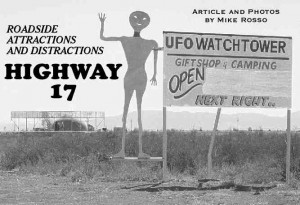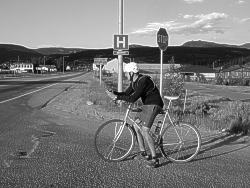Column by Hal Walter
Livestock – October 2002 – Colorado Central Magazine
A few days before the Colorado State Fair Mule and Donkey Show, I decided to practice for an event called Run, Ride and Lead.
This race involves an all-out sprint across an arena to where your animal stands; you mount and ride back across the arena, and then dismount and lead the animal back across again, presumably at a run. Several arenas have recently sprung up in my neighborhood and one neighbor couple gave me permission to use their new arena for practice.
I made a couple of runs with my paint jack Ace and was somewhat amused that I could do this in under 90 seconds. In fact, on one run in which I sprinted hard, mounted and found the stirrups quickly and cleanly, and got Ace trotting out in a straight line, I managed a 72-second run. That’s one minute and 12 seconds. I figured that would be fast enough to at least not draw laughter from the crowd in Pueblo. After all, I figured to have the only donkey in a field of mules and that I’d get beat like a gong anyway. I just wanted it to be a halfway respectable beating.
I also would be entering my jacks Ace and Redbo in a couple of other events. Ace was in a halter class called Most Colorful All Breeds. And both he and Redbo were in the Halter Donkey class. I train both of these animals to compete in the grueling Western Pack-Burro Racing Circuit and they are fine-looking critters. They are sleek and fit, and in my mind both have good conformation. Redbo, in fact, recently sired a mule that is perfect in every respect.
I have minimal show experience. A few years ago when the American Donkey and Mule Society held its National Show in Pueblo, I entered a jack named Spike in the Halter Jack class. This was when Spike still had cajones. I took note of how people showed their animals and I also walked away with a 5th-place ribbon in this national event. With this experience and with much better animals, I figured to do well at the state fair where the competition would not be as stiff — even though the entry fees seemed fairly stiff at more than $100.
Dressing for one of these things can be tricky. You have to look sharp and Western for the judge, yet you want to be comfortable. You don’t want to go overboard; books I’ve read strictly warn against striking a Howdy Doody visage. I chose a seagrass straw hat somewhere between The Man from Snowy River and Indiana Jones, and a short-sleeved plaid Levis shirt in olive, navy and white. I wore my newest clean jeans and a sharp southwestern-style belt and buckle. I’m not as vain as you might think, but I did check the mirror, and knew I was dressed better for the fair than I dressed for work back when I had a job.
The morning of the show my wife, Mary, and I loaded the animals and drove to Pueblo. Some high cloud-cover seemed to promise a break from the usual Pueblo heat, but it soon burned off and we found ourselves at the fairgrounds with the temperature soaring into the hellish mid-90s. Mary went to check in at the horse show office, and as I unloaded Ace and Redbo, I saw some people looking over my animals with a critical eye. It turned out that they had spotted miniature donkeys entered in the most colorful event. We went about our business brushing our animals and cleaning their feet. Then we put Redbo in a stall and led Ace over to the arena.
The horse people, we heard, had raised a fit over sharing facilities with mules and donkeys. All the horse events were in the more shaded arenas and all the mule and donkey events were scheduled for the bright and sunshiny East Arena convection oven. We milled around in what little shade we could find and some colorful animals started to appear. There were paint mules, an appaloosa mule, the two spotted miniature donkeys and two zebra hybrids — I wasn’t sure whether they were part horse or part donkey, but my suspicions were soon borne out.
When I checked in with the gatekeeper she said: Let me check on the long-sleeve rule. I didn’t know the dress code was so strict at the fair, but when I inquired as to what she was talking about she said that I was supposed to wear a long-sleeve shirt for this show. Mary ran to the truck to see if I had stashed another shirt behind the seat, but I had not. They allowed me into the show ring anyway.
Inside, one of the zebra-crosses went berserk and there was a minor rodeo in which its handler was dragged like a cartoon character face-first through the muck. The animal was caught and the show resumed. The judge from New Jersey walked up and down looking at the animals. He noted out loud that I was showing a jack. He then solicited input from the crowd. One of the handlers had a particularly raucous following in the stands. I looked up and down the row of animals. Ace was truly the most colorful animal in the show with five distinctly different colors white, buckskin, gray, black and a color that horse people call grulla. I guessed we would do well despite being only second or third on the crowd meter.
So imagine my astonishment when the announcer broadcast the winners and as they exited the arena in order until we were left standing alone. Did my shirt really piss off the judge that much?
Mary was already quizzing the judge near the gate. As we walked back to the stall in shock she told me the judge said his decision was based on conformation. This made even less sense to me than the shirt, as in my opinion Ace had better conformation than most of the animals in the ring.
The plan had been for Mary to show Ace in the donkey halter class and for me to show Redbo. But with the judges apparent dislike of Ace we saw no sense in putting Mary through the humility for another last place even though we had paid the entry fee. Besides, Mary’s shirt situation was even more dire than my own, as her shirt was not short-sleeved, but actually sleeveless.
So into the ring I went with Redbo. There was a nice dark-sorrel jenny, the same two spotted miniatures and some other assorted donkeys, none of which I thought as handsome as my jack. We went through the same drill, only we had to trot into the ring. I stood him as squarely as possible even though he was very interested in the attractive red jenny. After what seemed like a long wait, we were judged sixth place out of eight in this class.
Once again Mary was talking to the judge, now questioning why he thought Redbo’s conformation was worse than these other donkeys, some of which looked more like pot-bellied pigs than equines. Now the judge explained that by conformation he did not necessarily mean the animals actual conformation but how the animal stood in the ring and the showmanship of the handler. He drew her a diagram of how he wanted the animals to stand spread, rather than square as I had stood both Ace and Redbo. Mary noted that she didn’t notice any of the other handlers displaying their animals in this manner. Plus, if its partly based on showmanship, how do you place a loose zorse in the most colorful event ahead of the most colorful animal in the ring?
Clearly what we were dealing with here was something the zebra-cross handler had probably tasted firsthand during his flying belly flop through the arena dirt.
Bewildered, we took Redbo back to the stall and began looking for something to do as the temperature soared and the events got further and further behind schedule. The Run, Ride and Lead was growing more and more distant in the future. We watched the mule log-skidding competitions. We considered walking around the fair to pass the time, but as an intern for the Pueblo Star-Journal and Chieftain long ago I actually produced a feature story by interviewing the fat lady — further proof that I had exhausted all fair amusement from this event more than 20 years ago.
At some point in time it occurred to me that I would have to wait longer than it would take to run this jackass from Fairplay to the top of Mosquito Pass and back for the chance to ride a jackass across an arena for a judge from New Jersey who didn’t like short-sleeve shirts on a 90° day. The notion seemed complete in its absurdity. From somewhere across the fairgrounds I thought I heard a certain rotund gal singing an aria. We loaded up.
But the Hotel Pueblo turned out to be a lot like a Westcliffe subdivision — you can check out any time you like, but you can never leave. Also, we were now fresh out of drinking water. At Gate 6 we learned we could not exit without an exit paper. Like the long-sleeve shirt, this was the first I’d heard of this. I had to park my trailer and was chauffeured back to the horse show office to get a slip of paper as absolute proof that I had not stolen my own jacks. Meanwhile, for entertainment during my absence, the security guard complained to Mary about how he would never work at the fair again because of its disorganization. Lucky for me, Pueblo Chieftain photographer Chris McLean appeared at the horse show like an angel on a golf cart and treated me to a cool and breezy ride back to my rig.
The next day, while fruitlessly looking for mention of long sleeves in the rules, I found a section about protesting show results. It seems you have to post $150 in cash or certified funds, and if your protest is not upheld the money is not refunded. A glance at one donkey text indicated that donkeys and mules are to be shown standing square, like quarterhorses, not spread. I just laughed.
Next year during the state fair I’m going to take my jacks to my neighbors arena on my own schedule and see if I can beat my 1:12 time for the Run, Ride and Lead. Anybody with a mule or donkey is welcome to meet me there. No entry fees. No prizes. No horse pucky.
Writer and jackass rancher Hal Walter suggests the Colorado State Fair be relocated to a more temperate climate in Central Colorado, perhaps held in conjunction with Anza Day in Poncha Springs.


